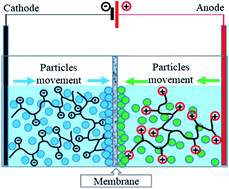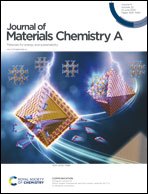Novel one-step electrophoretic deposition of the membrane-electrode assembly for flexible-battery applications
Abstract
Wearable electronic devices and gadgets raise the need for flexible, thin and lightweight batteries. In this article we present for the first time, a unique, single-step method for the preparation of a membrane-electrode assembly for flexible-battery applications. Concurrent electrophoretic deposition (EPD) of positive and negative battery electrodes (LFP and LTO) on opposite sides of a commercial nanoporous membrane (Celgard 2325) results in the formation of a three-layer-battery structure. The cell comprising this electrophoretically deposited structure ran for more than 150 cycles with a 125–140 mA h g−1 capacity, which approaches the theoretical value of lithium iron phosphate. The electrodes can be deposited either cathodically or anodically by replacing the interchangeable charging agents, such as polyethyleneimine and polyacrylic acid. These polyelectrolytes, when adsorbed on the particles of the active material, serve also as binders. The simultaneous EPD, which we developed, can be used for the simple and low-cost manufacturing of a variety of cathode and anode materials on nanoporous polymer- and ceramic ion-conducting membranes for energy storage devices.



 Please wait while we load your content...
Please wait while we load your content...